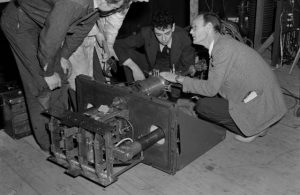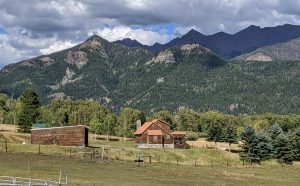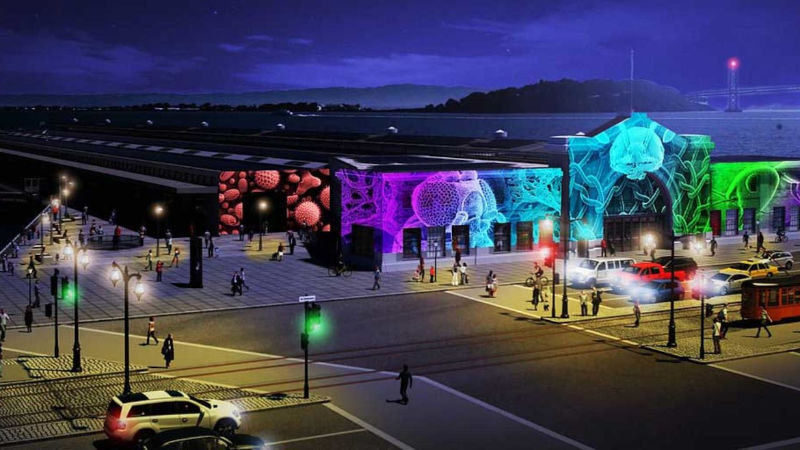—From physics and political commitment to a new conception of what a science museum should be.—
The history of twentieth-century science is full of physicists turned into true cultural heroes. Their work and contributions, however, were made possible by the work of many other scientists who are sometimes left in oblivion or, at least, seem to be pushed into the background. The intention of these lines is to recover the figure of one of these scientists who could be considered second-rate, trying to explore, from a perhaps somewhat lesser-known perspective, a whole series of aspects related to the activity of science professionals that are often overshadowed by the great contributions to knowledge that are highlighted in the biographies of the most recognized scientists. For this, we review here the biography of Frank Oppenheimer (1912-1985), brother of the better known Robert Oppenheimer (1904-1967), scientific director of the Manhattan Project and one of the most influential physicists of the twentieth century.

Frank Oppenheimer (centre) and Robert Thornton (right) examine a calutron. Wikimedia.
Frank Oppenheimer studied physics on the advice of his older brother. After graduating from the Johns Hopkins University in Baltimore and making a series of stays in different European laboratories, including the Cavendish Laboratory in Cambridge – where he was able to work with outstanding figures such as the physicist Ernest Rutherford (1871-1937) – the young Frank began his Ph.D. at Caltech in 1935, again following the footsteps of his brother Robert. There he built a beta radiation spectrometer, capable of selecting electrons of various energies from radioactive sources, with which he undertook different research studies. At the end of his doctoral thesis and after a short stint at Stanford University, Frank Oppenheimer joined the Radiation Laboratory of the University of California at Berkeley, where he worked under the supervision of Ernest O. Lawrence (1901-1958) on the separation of uranium isotopes using calutrons, mass spectrometers similar to cyclotrons, designed and used specifically for that purpose. In 1942, with the creation of the Oak Ridge National Laboratory, the young Oppenheimer went on to collaborate with this institution, dedicated to the production of isotopes and in particular to uranium enrichment. Finally, he was invited to Los Alamos to work under the direct supervision of his brother in the preparation of the first atomic bomb test.

Frank Oppenheimer (1912-1985). Wikimedia.
Frank Oppenheimer returned to Berkeley at the end of the war. There he continued to work on various projects, including the construction of a linear proton accelerator. In 1947, he finally obtained a position as a professor of physics at the University of Minnesota, with the prospect of working in a research group on cosmic rays that was being created in that institution. Frank had, however, a past that would bring him serious problems in the United States after the war. As a high school student he had already shown some sympathy for the approaches linked to the political left wing. During his years at Caltech, for example, he participated in initiatives to support Spanish Republicans. Moreover, in 1936, Frank married the Canadian Jacquenette [Jackie] Quann (1911-1980), an activist of the Young Communist League. Like many other North American intellectuals, both were linked for some years to the Communist Party and to its battle against racism and unemployment, as well as against fascism.

Frank Oppenheimer’s home on his 1500-acre ranch in the White River Valley near Pagosa Springs, Colorado. Wikimedia.
Frank’s brother, Robert, far from approving of his party membership, went so far as to question how his activism had set him back in obtaining his Ph.D. In fact, his political commitment was the reason why he had not been offered a postdoctoral research position at Caltech and why the one his brother got him at Stanford had not been renewed, before he joined – again, thanks to Robert’s help – the University of California’s Radiation Laboratory. Accused of being anti-American for his pre-war political activism, and despite being disassociated from the Communist Party since 1940, the witch hunting of McCarthyism forced him to quit his job at the University of Minnesota in 1949. He was unable to find a job as a physicist for the next few years. In fact, his passport was withdrawn, which also made impossible for him to get a job abroad, despite the offers he received. After being a farmer for a few years, he was finally able to work as a science teacher at Pagosa Springs High School, from 1957. The success of his students, along with some pressure from his colleagues, allowed him to join the University of Colorado a couple of years later.

Exterior of the Exploratorium Museum. Pinterest.
His time in secondary education awakened his interest in improving scientific education, receiving funding to develop laboratory experiments that could be used for teaching physics and contributing to projects such as the Physical Science Study Committee (PSSC). This was conceived with the aim of improving the teaching of this discipline within the framework of a concern shared by different teachers for the evolution of traditional teaching that seemed unable to transmit any enthusiasm for physics or go beyond the memorisation of equations. Years later, after receiving funding to carry out a stay in Europe that allowed him to learn about some of the innovations developed by the main science museums of the old continent, Frank Oppenheimer founded the Exploratorium in San Francisco in 1969. It was a new model of an interactive and participatory museum, based on the methods used by Oppenheimer to awaken the curiosity of his students, whose objective was for visitors to have fun discovering the principles of science. The success of this centre was such that during the following decades numerous replicas emerged all over the world, inspiring many similar experiences and centres.
This type of science museum captivated both political powers and much of public opinion during the final decades of the twentieth century. Recently, however, some critical voices have spoken up to denounce the over-simplified presentation of science and progress in these types of centres, as well as the superficiality and the little real knowledge that is obtained on too many occasions from the visit to these institutions. Similarly, it has been pointed out that the activities in these types of centres are totally directed towards obtaining correct answers. In this sense, they insist, the results of scientific activity are presented as absolute and unmistakable truths, and ignoring the social context in which they are framed and their process of development clearly has multiple dangers.
Pedro Ruiz-Castell
IILP-UV
How to cite this paper:
Ruiz-Castell, Pedro. Frank Oppenheimer. Sabers en acció, 2021-02-24. https://sabersenaccio.iec.cat/en/frank-oppenheimer-en/.
Find out more
You can find further information with the bibliography and available resources.
Recommended reading
Bird, Kai; Sherwin, Martin. American Prometheus: The Triumph and Tragedy of J. Robert Oppenheimer. New York: Alfred A. Knopf; 2005.
Cole, K. C. Something incredibly wonderful happens: Frank Oppenheimer and the world he made up. Orlando: Houghton Mifflin Harcourt; 2009.
Hein, Hilde. The Exploratorium: The Museum as Laboratory. Washington: Smithsonian Institution Press; 1990.
Primary sources
Alvarez, Luis W. et al. Berkeley proton linear accelerator. Review of Scientific Instruments. 1955; 26: 111-133.
Bailey, Carl; Drukey, D. L., Oppenheimer, Frank. A magnetic ion source. Review of Scientific Instruments. 1949; 20 (3): 189-191.
Oppenheimer, Frank. Drift Tube Design in Linear Proton Accelerator. Oak Ridge: Technical Information Division, Oak Ridge Operations; 1947.
Oppenheimer, Frank; Correll, Malcolm. A Library of Experiments. American Journal of Physics. 1964; 32 (3): 220-225
Oppenheimer, Frank. The Exploratorium: A Playful Museum Combines Perception and Art in Science Education. American Journal of Physics. 1972; 40 (7): 978–984.
Oppenheimer, Frank. The Palace of Arts and Science: An Exploratorium at San Francisco, California, U.S.A. Leonardo. 1972; 5 (4): 343–346.
Oppenheimer, Frank. The study of perception as a part of teaching physics. American Journal of Physics. 1974; 42 (7): 531-537.
Oppenheimer, Frank. The Exploratorium and Other Ways of Teaching Physics. Physics Today. 1975; 28 (9): 9-13.
Panofsky, Wolfgang K.; Richman, Chaim; Oppenheimer, Frank. Control of the Field Distribution in the Linear Accelerator Cavity. Physical Review. 1948; 73 (5): 535.
Archives
Guide to the Frank Oppenheimer Papers, 1902-1985″. BANC MSS 98/136 c. University of California, Berkeley – Online Archive of California; 2001. Available here.
Guide to the Exploratorium Records, 1957-[ongoing]. BANC MSS 87/148 c. University of California, Berkeley – Online Archive of California; 2001. Available here.
Frank Oppenheimer Papers, 1946-1959. University of Minnesota Libraries – University of Minnesota Archives; 2002. Available here.
Websites and other sources
Bell, Alice. Frank Oppenheimer. [Updated 27/09/2010]. Available here.
Exploratorium. Dr. Frank Oppenheimer. [Accessed 6/07/2017]. Available here.
Oppenheimer, Frank. Interview by Judith R. Goodstein. San Francisco, California, November 16, 1984. Oral History Project, California Institute of Technology Archives. Available here.
Oppenheimer, Frank. Interview about the Explainer program – Exploratorium. (Updated 6/01/2012). Available here.
Wellerstein, Alex. A Tale of Two Oppenheimers. [Updated 18/01/2012]. Available here.



